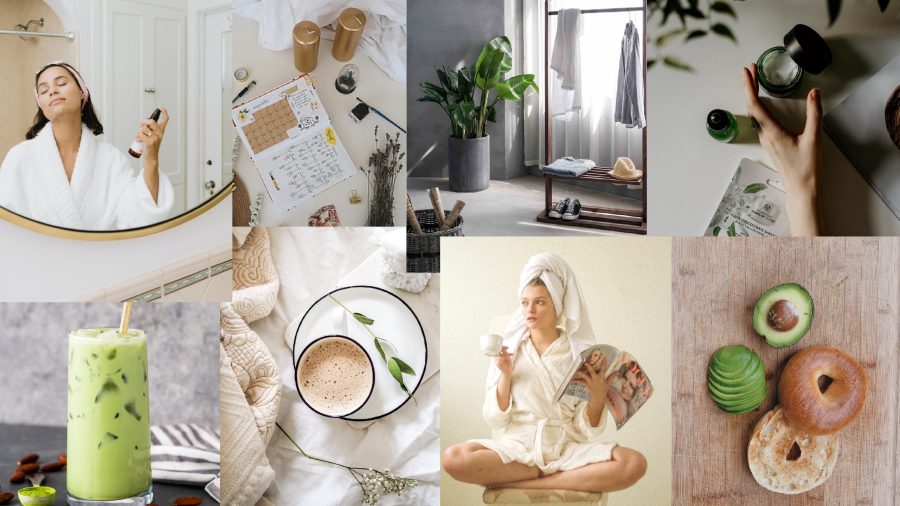Who Is “That Girl” And Why Does Everyone Want to Be Her?
October 14, 2021
She wakes up at 6 a.m. to watch the sunrise, journal, and meditate. She eats avocado toast with a green smoothie for breakfast, consistently hits the gym, and is always put-together. She has a minimalistic bedroom, wears stylish outfits, and applies a face mask every day before bed. She is “that girl,” and she is the girl everyone wants to be.
Recently, the “that girl” aesthetic has blown up all over TikTok, YouTube, and Instagram. At the core of the concept, being “that girl” is about being a better version of yourself—developing healthy eating habits, moving your body, and journaling. There are tutorials on social media that guide you through becoming “that girl,” too. For example, YouTube creator Fernanda Ramirez’s video on becoming the “ultimate ‘that girl’” displays her clearing her room, cooking an aesthetic breakfast, and applying a face mask. “Personally, I believe that striving to be ‘that girl’ is a wonderful mindset to have,” Grace Chung (’24) said. “Wanting to see a better version of yourself that you’re happy with is the goal of life, isn’t it?”
As enviable the look is, the aesthetic comes with its own set of problems. In fact, some believe the lifestyle isn’t sustainable and promotes toxic positivity. “I’m all for women putting themselves first; I’m all for prioritizing self-care and being the best version of you,” @trishabatra said on TikTok. “But what I don’t support is how this aesthetic has convinced girls that they’re not perfect already, and that they have to do all these things to achieve this perfection that is completely impossible. Second, I’m against hustle culture. I think hustle culture is also toxic and I think it plays very well with the ‘that girl’ aesthetic—that they constantly need to be working and working towards themselves.” With this logic, Pilates, meditation, and journaling simply turn into checkboxes on a To-Do list rather than activities done for enjoyment.
Moreover, since it places an emphasis on health and fitness, it doesn’t take long to figure out that “that girl” is a pretty girl with a flat stomach and thin waist. The shape of one’s body isn’t indicative of the individual’s health and the aesthetic could perpetuate the harmful image of an “ideal body.” “I think it’s both good and bad,” Megan Yi (’23) said. “It’s good in the sense that it may motivate others to change their lifestyle for the better, but it can also be very bad because it can produce a false reality of what people’s lives are really like.” The aesthetic can be disguised as self-care when it’s just another unrealistic standard for girls to cling onto. In the long-term, this can lead to burnout, eating disorders, and self-hatred. There’s a performative aspect of the lifestyle, since the only way to prove that you’re “that girl” is to post about it. We see little to none about how the girl truly feels—we only focus on how she looks.
That is what differentiates a lifestyle from an aesthetic; rather than focusing on how put-together our lives look on social media, a healthier approach would be to adopt some of the habits of “that girl” and practice them at our own pace.“[T]he girls we see on TikTok and those fancy influencers make us think that ‘that girl’ is a perfect human being, but I feel like the main focus of looking up to ‘that girl’ is for us to focus on our health both mentally and physically while making positive changes in our life,” Chung said. Working towards becoming a better version of yourself isn’t a linear process, and you can still look like a mess while making progress. Ultimately, being “that girl” is simply being the best version of yourself.

















































































































































